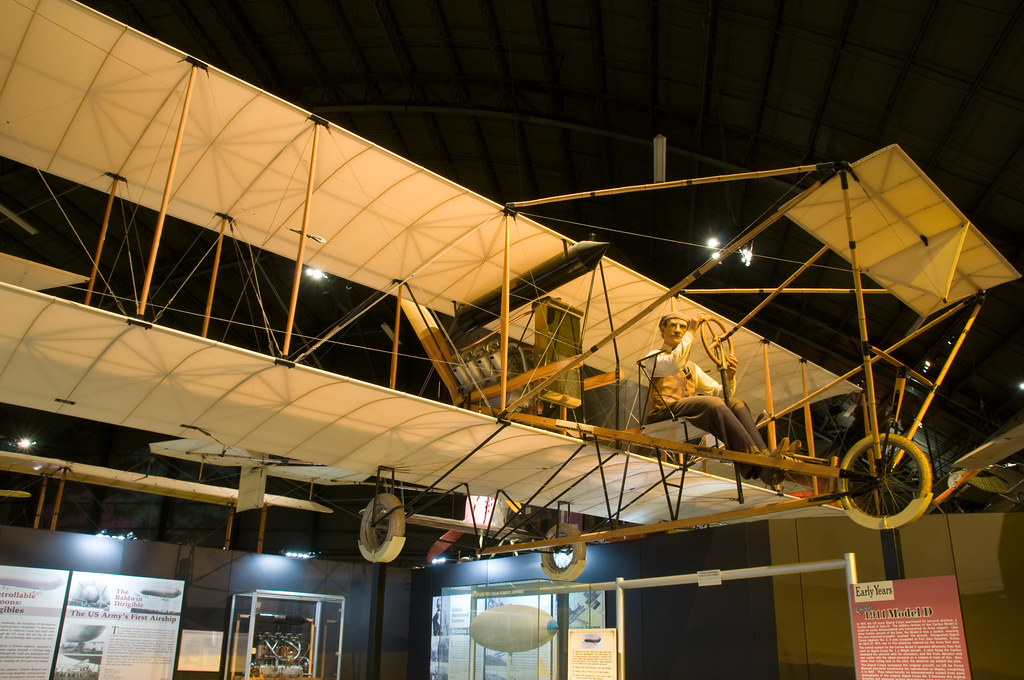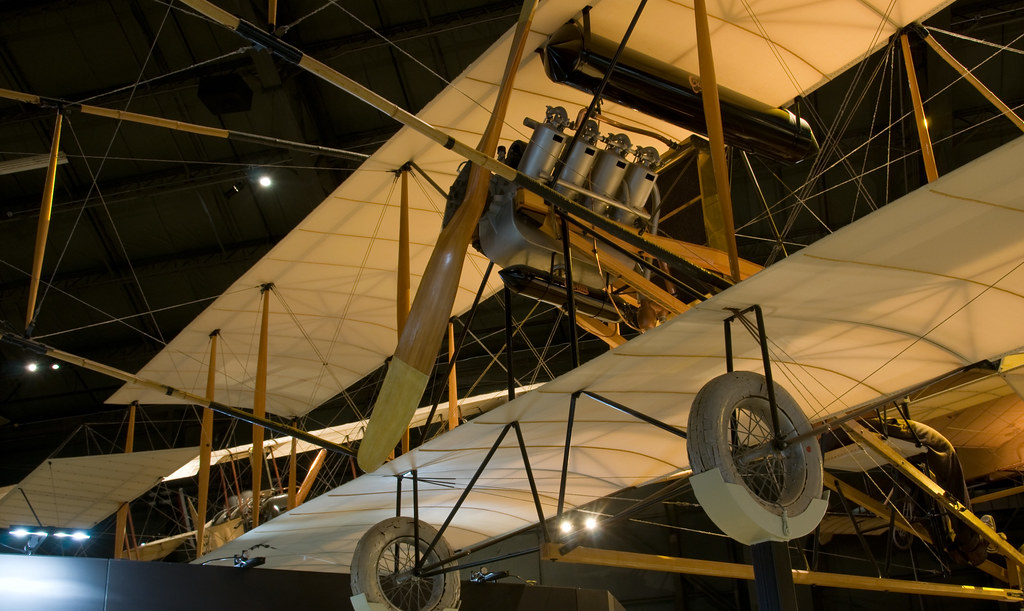
Wright 1909 Military Flyer (on the floor) and Bleriot Monoplane (hanging above)
The Wright 1909 Military Flyer became the first military heavier-than-air flying machine. Upon purchase by the Signal Corps for $30,000 on Aug. 2, 1909, the U.S. Army designated the Wright 1909 Military Flyer as Signal Corps Airplane No. 1, and it remained the only Army airplane for nearly two years. In October 1909, Wilbur Wright used Signal Corps No. 1 to give flight instruction to Lts. Frank P. Lahm and Frederic E. Humphreys. In 1910 Lt. Benjamin D. Foulois taught himself how to fly in Signal Corps No. 1 while stationed at Fort Sam Houston, Texas. By March 1911, after several crashes and repairs, the Army retired Signal Corps No. 1.
The Bleriot monoplane was an important early aircraft because of its inventor's notable exploits and the aircraft's role in early training and reconnaissance. It first achieved fame in 1909 when its designer, Louis Bleriot of France, piloted one on the first flight across the English Channel. During the early days of World War I, both the French and British used two-seat Bleriots for reconnaissance behind German lines. By 1915, however, more advanced aircraft relegated the Bleriot to a training role. Many Americans who joined the British and French flying services prior to the U.S. entry into the war learned to fly in the Bleriot. Later, members of the U.S. Air Service sent to France for flight training received their first instruction in Bleriots with "clipped" wings that prevented them from taking off. At full throttle, the fledgling pilots bounced across the airfield, learning to control the rudder with their feet. Once they could keep the Bleriot on a fairly straight course, they advanced to an airplane that could leave the ground.


Curtiss Model D Type IV
In 1911 the U.S. Army Signal Corps purchased its second airplane, a Curtiss Model D Type IV. The military version of the Curtiss Model D could be easily disassembled and transported on Army wagons. Like other Curtiss aircraft of the time, the Model D was a pusher, meaning the rear-mounted propeller "pushed" the aircraft. Designated Signal Corps Airplane No. 2, it was accepted at Fort Same Houston, Texas, on April 27, 1911, one of five airplanes ordered by the Army that year. The control system for the Curtiss Model D operated differently than that used on Signal Corps No. 1, a Wright aircraft. A pilot flying the Curtiss operated the ailerons with his shoulders, and the front elevator and rear rudder with the wheel mounted on a column in front of him. Also, rather than sitting next to the pilot, the observer sat behind the pilot.

No comments:
Post a Comment